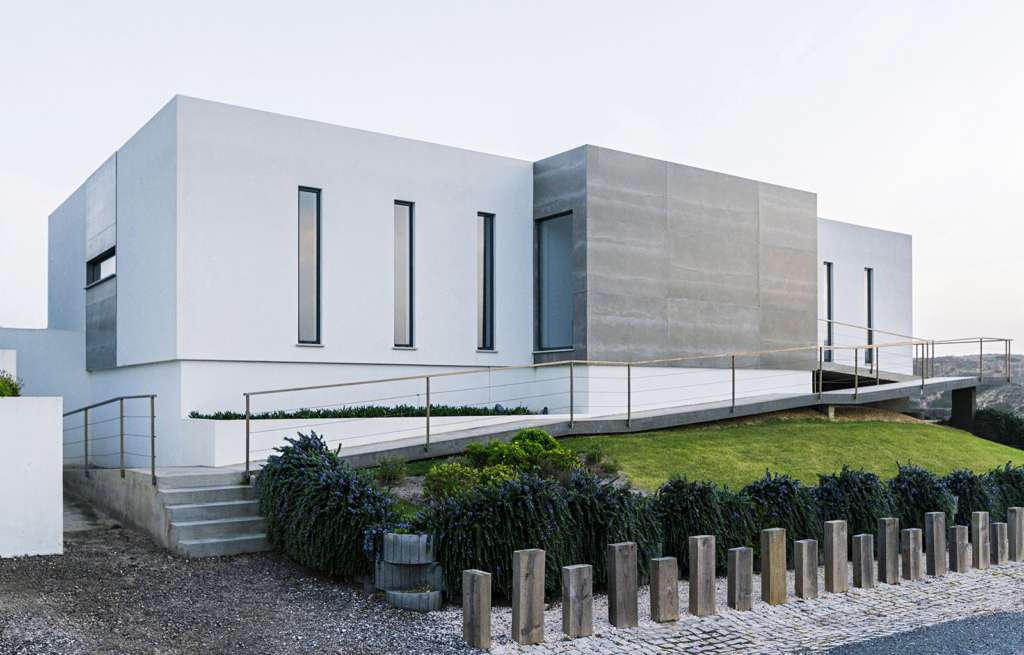The words “modern” and “contemporary” are often used interchangeably when it comes to architecture and interior design. However, while modern and contemporary homes can have similarities, there are key differences between the two styles. In this article, we’ll break down the main components of modern and contemporary architecture, and explain how to distinguish them.
What is Modern Architecture?
Influenced by the modern art movement, modern architecture emerged at the turn of the 20th century and was a dominant style until roughly the mid-20th century. While global interpretations of modern architecture varied, each was a response to major technological advancements that took place at the end of the 19th century. Reinforced concrete, cast iron and plate glass were revolutionary materials that allowed architects of the period to break away from historical architectural precedents.

Modern homes are characterized by minimalist design that emphasizes function. They are recognizable for their rectangular forms, lack of adornment and whitewashed exteriors. Many modern homes were also built with the landscape in mind. For instance, the lines of a roof or overhang might reflect the lines of natural surroundings. Modern homes further incorporate an appreciation of nature with horizontal compositions built low to the ground, and expansive glass windows or walls.
While modernist architecture may at first appear stark, it often includes natural materials like wood with rich, warm tones to ground the space. Modern homes are also known for their inviting, open floor plans. Here are some key characteristics to keep in mind when identifying modern architecture:
- Rectangular forms
- Lack of adornment
- Low, horizontal composition
- Elements of asymmetry
- Open floor plans
- Large glass windows
- Whitewashed exteriors
- Natural materials like wood
- Emphasis on nature
What is Contemporary Architecture?
Unlike modern architecture, contemporary architecture is not rooted in any one time period. That is, contemporary homes reflect architectural trends of the moment — what’s contemporary now may not be contemporary 20 years from now. However, this type of architecture is fluid in style, incorporating design elements of both past and present day. For that reason, contemporary homes often include elements typically found in modern homes. Hence why the two are so frequently confused.

Contemporary homes are unique for their incorporation of multiple architectural styles. While they feature the minimal adornment, open spaces and large windows of modern homes, they are also characterized by free-form composition not found in modernist architecture. With today’s technology, architects are no longer limited to linear forms. For this reason, contemporary homes tend to incorporate dramatic curves and seemingly impossible proportions.
Another main feature of many contemporary homes is eco-friendly, sustainable design and smart-home technology that reflects a response to today’s climate-change emergency. For instance, contemporary homes are often constructed of natural and recycled materials. Here are some key characteristics to keep in mind when identifying contemporary architecture:
- Combination of styles
- Both angles and curves
- Free-form composition
- Elements of asymmetry
- Open floor plans
- Large glass windows
- Mixed materials
- Emphasis on nature
- Sustainable design
Why Do These Differences Matter?
When buying a home, it’s in your best interest to use accurate language when describing what you want. Similarly, it’s useful to know what a broker, architect or homebuilder means when they say “modern” or “contemporary.” Often, you’ll find that even industry professionals will use the two words interchangeably, which can prove confusing for prospective homebuyers. Learning the differences between modern and contemporary architecture will help you better understand your own style and what you’re looking for in a home.
K. Hovnanian builds beautifully-designed new construction homes all across the country. Visit our new home communities in your state.
Last Updated on December 7, 2020
